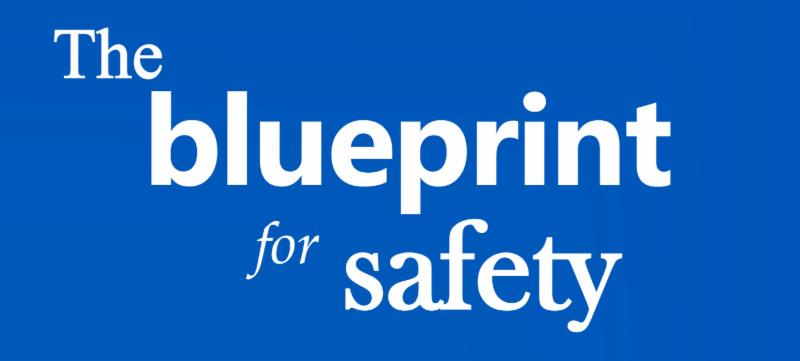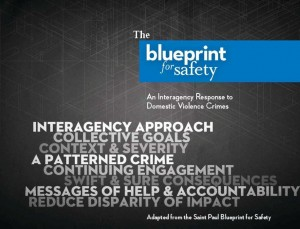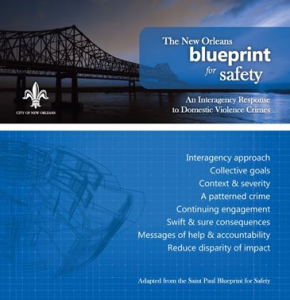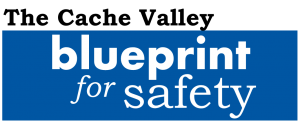
E-Newsletter on Reforming Criminal Justices Responses to Battering
The Blueprint Bulletin provides concrete tools and information to support your work. Each issue features foundational information about the Blueprint for Safety model, updates on Blueprint communities, and ideas about how to identify and address inequities in case outcomes. Praxis can advise you on the adaptation and implementation of the Blueprint and/or provide assistance on using aspects of the Blueprint model in your community. Access our Blueprint Clearinghouse to learn more about Blueprint training, consulting, information, strategies, and research.
Praxis Visits the Cache Valley Blueprint in Logan
Interested in Becoming a Blueprint Community?
Resources for Assessing Blueprint Readiness
Blueprint in the News
Contact Us
 Praxis Visits the Cache Valley Blueprint in Logan, Utah
Praxis Visits the Cache Valley Blueprint in Logan, Utah
 In July 2019, Praxis visited the Cache Valley Blueprint for Safety to orient their Steering Committee to the Blueprint and participate in practice assessment activities. Local Blueprint Coordinator, Haylee Hunsaker, and Blueprint Advocate, Tanya Pirtle, organized meetings and assessment activities with the Logan City Police Department, Cache County Sheriff’s Office, Cache County Attorney’s Office, Logan City Probation Services, regional office of Utah Department of Corrections Adult Probation & Parole, Utah 1st District Court, and the Community Abuse Prevention Services Agency (CAPSA).
In July 2019, Praxis visited the Cache Valley Blueprint for Safety to orient their Steering Committee to the Blueprint and participate in practice assessment activities. Local Blueprint Coordinator, Haylee Hunsaker, and Blueprint Advocate, Tanya Pirtle, organized meetings and assessment activities with the Logan City Police Department, Cache County Sheriff’s Office, Cache County Attorney’s Office, Logan City Probation Services, regional office of Utah Department of Corrections Adult Probation & Parole, Utah 1st District Court, and the Community Abuse Prevention Services Agency (CAPSA).
Located in northern Utah, Cache County has a population of about 120,000 people; 50,000 of whom live in the county seat of Logan. The community has had an active coordinated community response for a number of years and received funding from the Office on Violence Against Women to implement the Blueprint model to reinvigorate and strengthen their work in 2018. During the visit, Praxis saw first-hand the commitment of local practitioners and advocates to providing a meaningful and effective response to domestic violence crimes. The Cache Valley Blueprint will continue to assess local practices and identify areas of response to strengthen during the current phase of their Blueprint implementation in preparation for adapting the model Blueprint policies and protocols.
 Interested in Becoming a Blueprint Community?
Interested in Becoming a Blueprint Community?
The Office on Violence Against Women (OVW) solicitation for Improving Criminal Justice Response (ICJR, formerly Grants to Encourage Arrest)  grant was just released! Blueprint communities have received funding to support Blueprint implementation through ICJR grants. If your community is interested in applying for Blueprint funding in 2020, now is a good time to assess your community’s readiness and start preparing your community for taking on the Blueprint.
grant was just released! Blueprint communities have received funding to support Blueprint implementation through ICJR grants. If your community is interested in applying for Blueprint funding in 2020, now is a good time to assess your community’s readiness and start preparing your community for taking on the Blueprint.
 The Planning a Blueprint for Safety Proposal resource is a useful guide on the groundwork and information gathering needed to write a grant proposal.
The Planning a Blueprint for Safety Proposal resource is a useful guide on the groundwork and information gathering needed to write a grant proposal.
 OVW solicitations and other funding sources often require letters of commitment or memorandums of understanding (MOU) with project partners. Consider adapting the Sample Memorandum of Understanding (MOU) that you may edit for use in your proposal. See also the template for presenting on the Blueprint for Safety to secure project partnerships with criminal legal system agencies and community-based advocacy.
OVW solicitations and other funding sources often require letters of commitment or memorandums of understanding (MOU) with project partners. Consider adapting the Sample Memorandum of Understanding (MOU) that you may edit for use in your proposal. See also the template for presenting on the Blueprint for Safety to secure project partnerships with criminal legal system agencies and community-based advocacy.
 Resources for Assessing Blueprint Readiness
Resources for Assessing Blueprint Readiness
Are you wondering whether your community is ready to design and implement a Blueprint for Safety? If the answer is “yes,” The Guide to Becoming a Blueprint Community includes several resources that support community explorations of readiness to adapt, implement, and sustain the Blueprint: i.e., whether your community is ready to become a Blueprint community. Find the following resources and more in the Blueprint Guide Appendices online.
Quick Start Guide
The Quick Start Guide introduces the Blueprint and the roles and activities involved in establishing a Blueprint. It provides a stepping-off point to become familiar with the approach and process and gauge community readiness.
Essential Commitments of a Blueprint Community
Local CCRs interested in the Blueprint model should consider their readiness to:
- engage in self-examination and problem-solving,
- center community-based advocacy in Blueprint leadership and all Blueprint activities, and
- commit to the Blueprint’s six foundational principles.
To build and sustain a Blueprint for Safety requires a sound foundation of knowledge, skills, and capacity for making system-wide change. The community readiness questionnaire helps draw a picture of that capacity, including:
- Current level of interagency coordination and problem solving in the community
- Role of community-based advocacy in shaping the criminal legal system response
- Access to basic information about domestic violence-related crimes
The questionnaire identifies community strengths and pinpoints areas that will need more attention in order to establish and maintain the Blueprint.
Frequently Asked Questions
FAQs about the Blueprint for Safety address what is distinctive about the Blueprint, the key steps, who does the work, how much it costs, how to sustain the Blueprint, etc.
 Blueprint in the News
Blueprint in the News
 |
Blueprint for Safety Monitoring and Language Access Assessment in New Orleans, Louisiana |
| CAPSA gets 3-year Blueprint grant to help local agencies assist domestic violence victims |  |
 Contact us for more information
Contact us for more information
Please contact the Blueprint for Safety Team, info@praxisinternational.org
This project was supported by Grant No. 2015-TA-AX-K032 awarded by the Office on Violence Against Women, U.S. Department of Justice. The opinions, findings, conclusions and recommendations expressed here are those of the author(s) and do not necessarily reflect the views of the U.S. Department of Justice.

